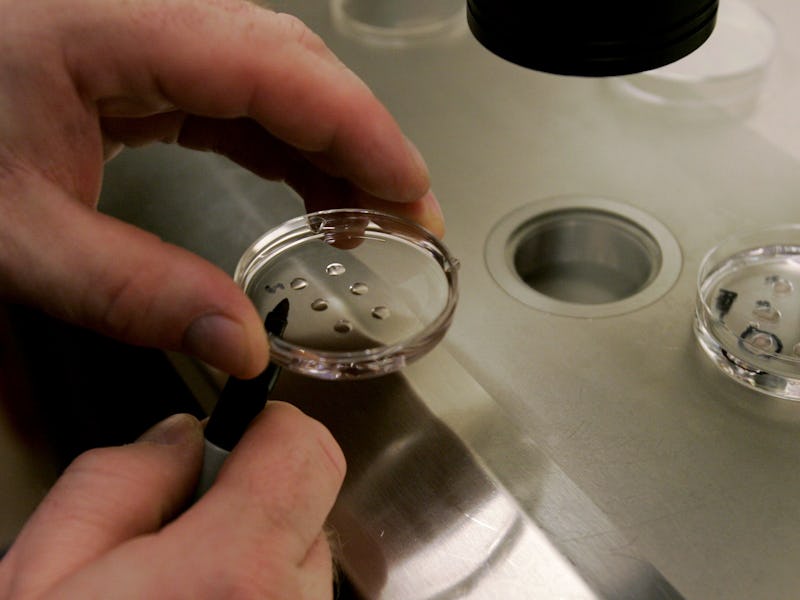Turns Out There’s More Than One Way to Make a 3-Parent Baby
The process is called "pronuclear transfer."

Remember everything you thought you knew about three-parent babies? Good, prepare to unlearn all of it. While the first such baby was born via mitochondrial replacement therapy — a mommy, a daddy, and a DNA donor — the second has arrived through a new technique called pronuclear transfer.
On January 5, a baby girl in Kiev, Ukraine was born after the well-established process of fertilizing an egg with sperm was supplemented by then taking those combined genes and placing them inside a donor egg. Accordingly, the baby’s DNA derives predominantly from the two parents but also includes some portion from the woman who donated the egg.
This is big news for science in general; even though the first 3-parent baby was born last year in Mexico, the success of pronuclear transfer is huge news for the field of In Vitro Fertilization, commonly referred to as IVF. For would-be parents who want a biological child but are infertile — as was the case with the Ukrainian couple — traditional IVF is not always an option. If the mother has a genetic disorder that could be passed on to the child, for example, then transferring the fertilized DNA to the egg of a woman without the disorder provides a safer method of conception. The Ukrainian parents in question didn’t have the kind of genetic complications the new IVF process was developed for, but had nevertheless been unable to conceive via conventional IVF. The result — that is, the healthy baby — speaks for itself, and according to the BBC there’s already another couple — er, trio — with a pronuclear transfer baby on the way.
Babies conceived via protonuclear transfer get most of their DNA from their original two parents - but there's a small amount present from a third.
The OG 3-parent baby-making method was also conceived as a workaround for aspiring parents held back by mitochondrial disease. That first baby was born to a mother with Leigh’s syndrome, a condition passed down through the mother’s mitochondria to the child, resulting in impaired growth of the baby’s brain, muscles, and nervous system.
The key point here is that for a three-parent baby to work, the donor parent must be a genetically healthy woman. That doesn’t mean, however, that we’re going to see an influx of 3-parent babies
“Pronuclear transfer is highly experimental and has not been properly evaluated or scientifically proven,” professor Adam Balen, chairman of the British Fertility Society, told the BBC. “We would be extremely cautious about adopting this approach to improve IVF outcomes.”
IVF is already a somewhat divisive procedure even when it involves only two parents, largely because of detractors, often religious, who have taken it upon themselves to preach that the resulting babies are “unnatural.” Some people also object to the idea that parents of IVF-conceived babies can choose their biological gender. So it’s reasonable to assume that both the baby born in Mexico and the new Ukrainian baby will be the targets of some free-flowing and unjustified hate, even more so than what’s already heaped on two-parent IVF babies. But because of the anonymity, hopefully all four (six) parents involved remain relatively inoculated from press attention and can enjoy the fact that, in addition to the babies they wanted, they’re also in possession of some pretty rad science.